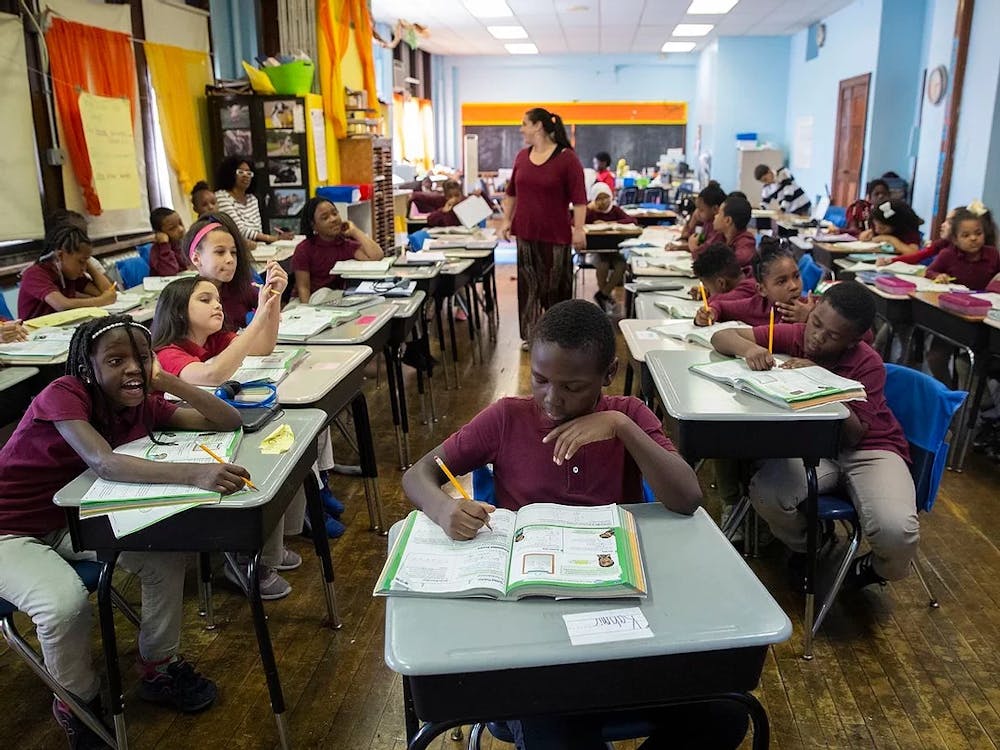Small classroom size is preferred by parents and teachers alike. Less students in a class means more personal attention for each student, as well as fewer tests to grade and fewer disruptions. State legislators continue to pass laws regarding lowering the number of students in a classroom, however what does research say about class size? One widely referenced study showing the positive impact of a smaller classroom size comes from a Student Teacher Achievement Ratio (STAR) study conducted in Tennessee in the late 80s. Students and teachers were randomly assigned to classes with an average of 15 or 22 students. The 7 student (32%) reduction in class size was found to increase student achievement by about 3 additional months of schooling four years later . However, few other studies show any drastic effects, if any at all. Large class size reductions can show positive results, but considering variables like cost, space, and teacher availability, this isn’t always viable.
Every state has policies regarding class size, whereas Pennsylvania leaves it up to individual districts to decide. According to the School District of Pennsylvania policy No. 126, the maximum class size in grades K-3 is 30, and 33 for every other grade. In the experience of myself and other district students, high school classes tend to have at least 30 students, usually more. It depends on the school; buildings range in size and the total number of students. However, it seems clear the average class size in the Philadelphia school district is higher than statewide, with the average number of students in a departmentalized instruction classroom being 21.4 (National Center for Education Statistics). The reason for this difference comes down to various factors, including more students and less space and money in the Philadelphia district. Research shows that increasing the pupil to teacher ratio in the U.S. by one student would save at least $12 billion per year in teacher salary costs alone. While increasing class size does save money, losing students to private schools outside of the district is another concern. One study shows 50% of parents cite smaller class size and 39.3% cite more individual attention for their child as reasons for choosing private schools (The Friedman Foundation for Educational Choice).
Having more students in a classroom saves money as well as deals with shortage of classrooms in district buildings. But what do students and teachers have to say on the matter? I asked a few students attending various school district schools their opinions on class size. Most agreed, their classes in high school have 30 to 33 students, and they enjoy smaller classes more.
Hannah Lux, a student at Masterman high school told me, “I notice that with smaller classes it’s easier to understand things because the teacher is able to pay attention to each student more. With bigger classes it’s hard to do whole class activities because there’s so many people”.
Students pointed out that with smaller numbers of students came more discussion lessons and less structure. I also asked a few district teachers what they thought about the sizes of classes they’ve taught. Elana Soloman, a history teacher at Masterman High School, told me she typically has 30 students in a class. With such a large group, there is less time for teachers to build a personal connection with each student, who sometimes feel less motivated to speak to the whole group. “Even lessening the number to 25,” she told me, “would be better.”
Dr. Elliot Drago, social studies department chair at Central High School, discussed the marked differences in teaching 25 versus 33 students: “I prefer smaller classes because it allows me to focus more time on individual students and gives me more leeway as to the amount of work I assign,” Dr. Drago wrote. More students in a class results in less time per individual student and more time spent grading assignments and giving feedback.
In a perfect world, classes would be smaller allowing for a better teacher-student connection, but there’s one question that continues to be asked: is class size reduction the best way to spend state funds? With an already stretched budget in the district, it seems class sizes won’t be getting smaller anytime soon.




